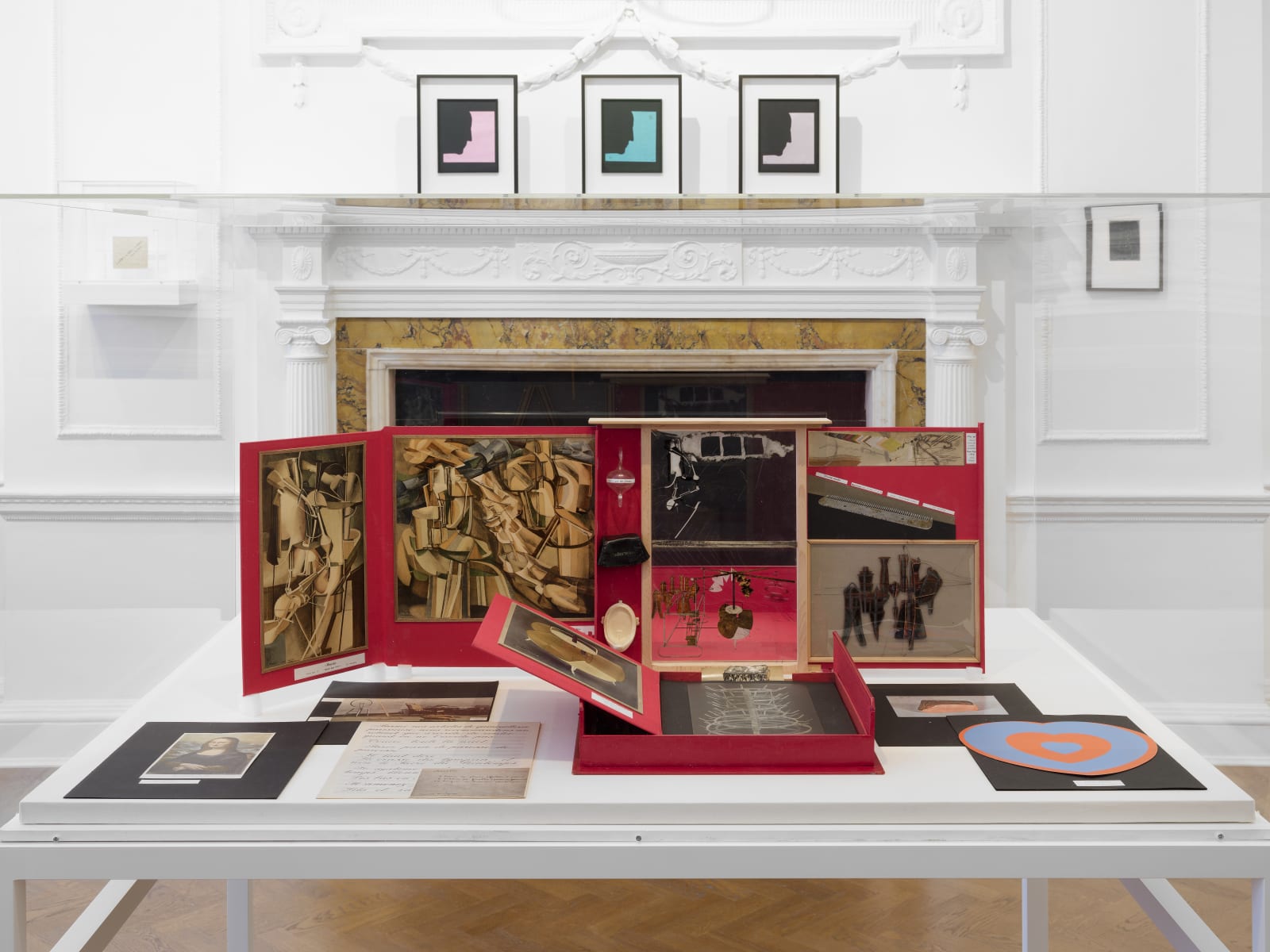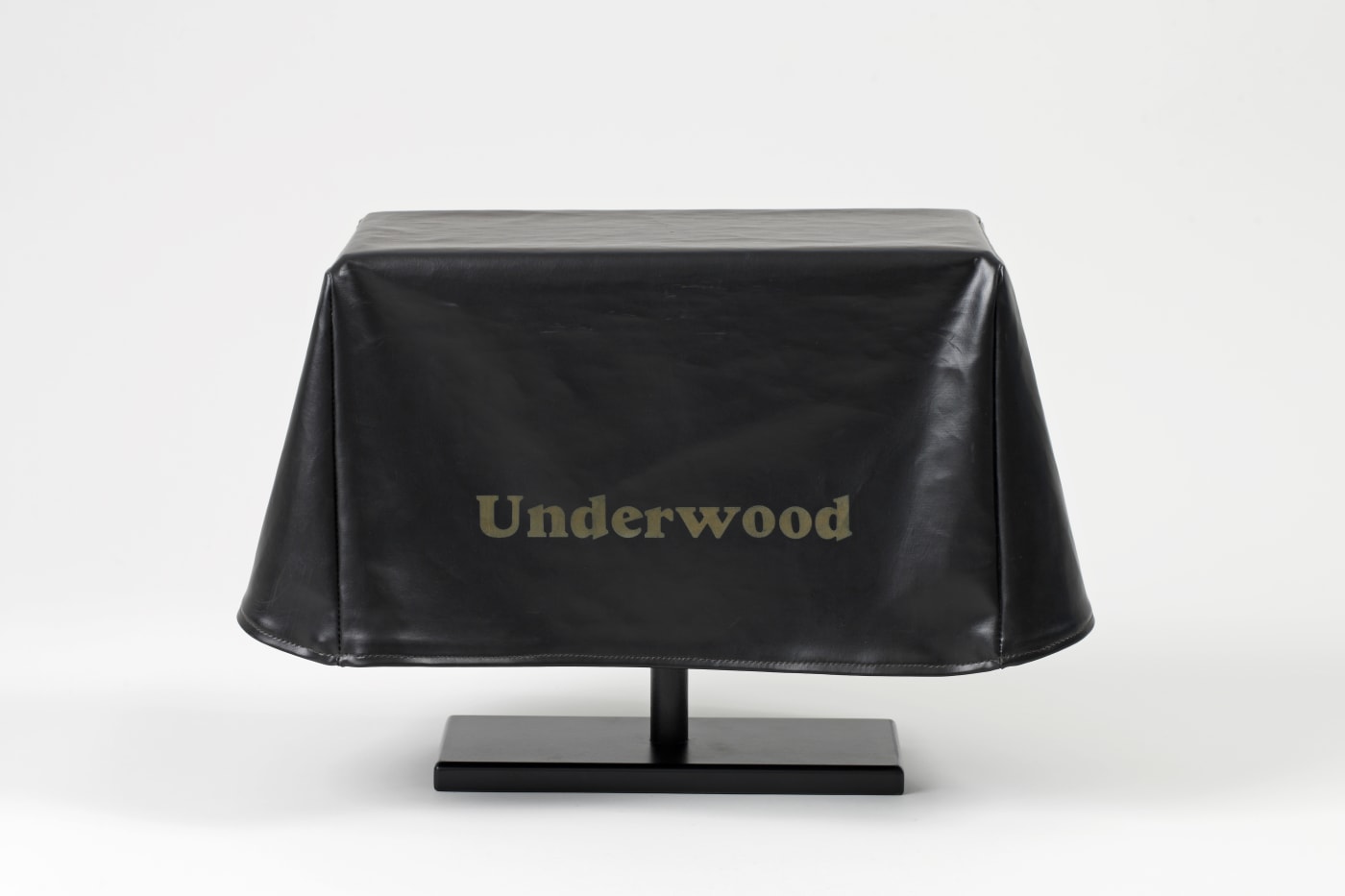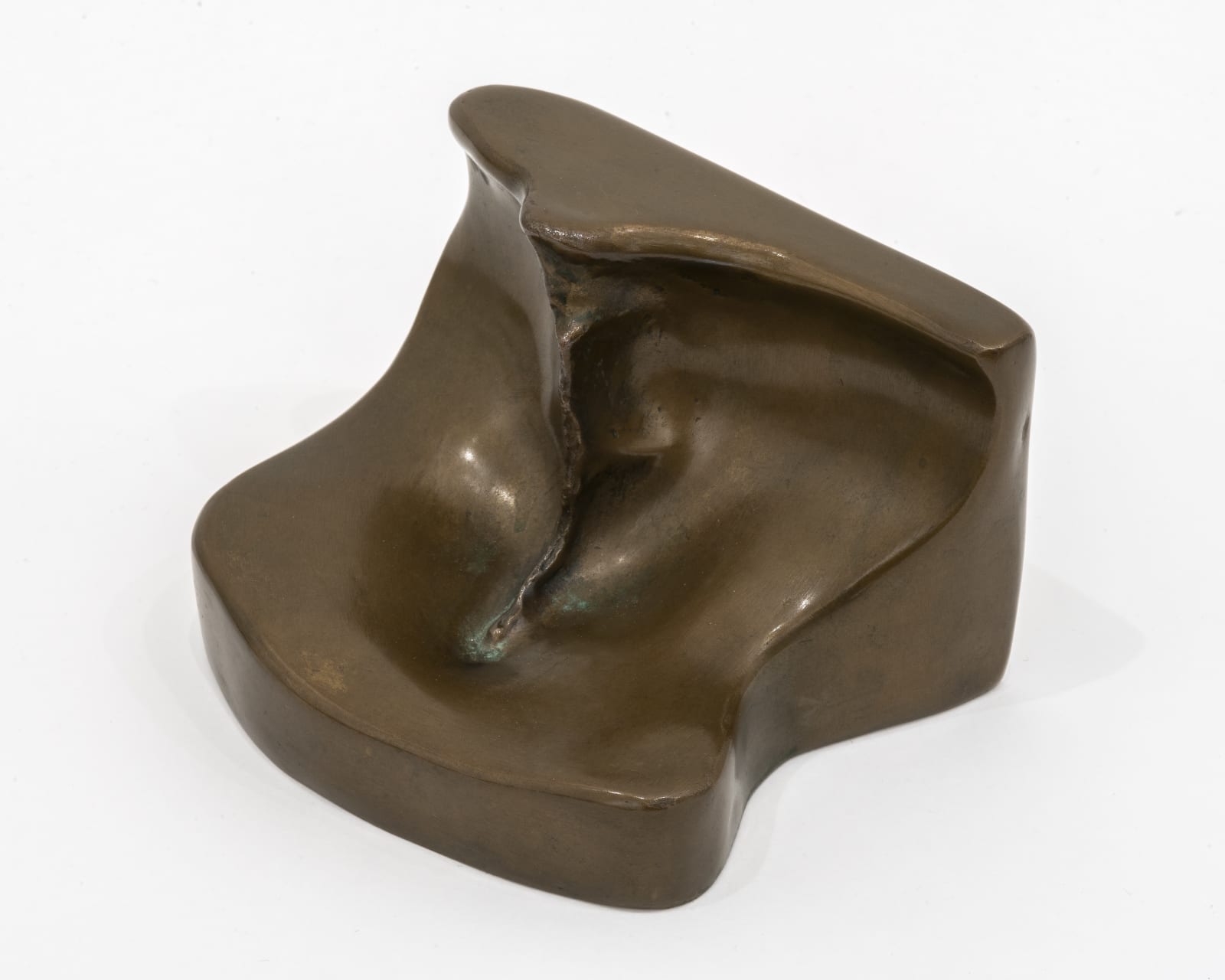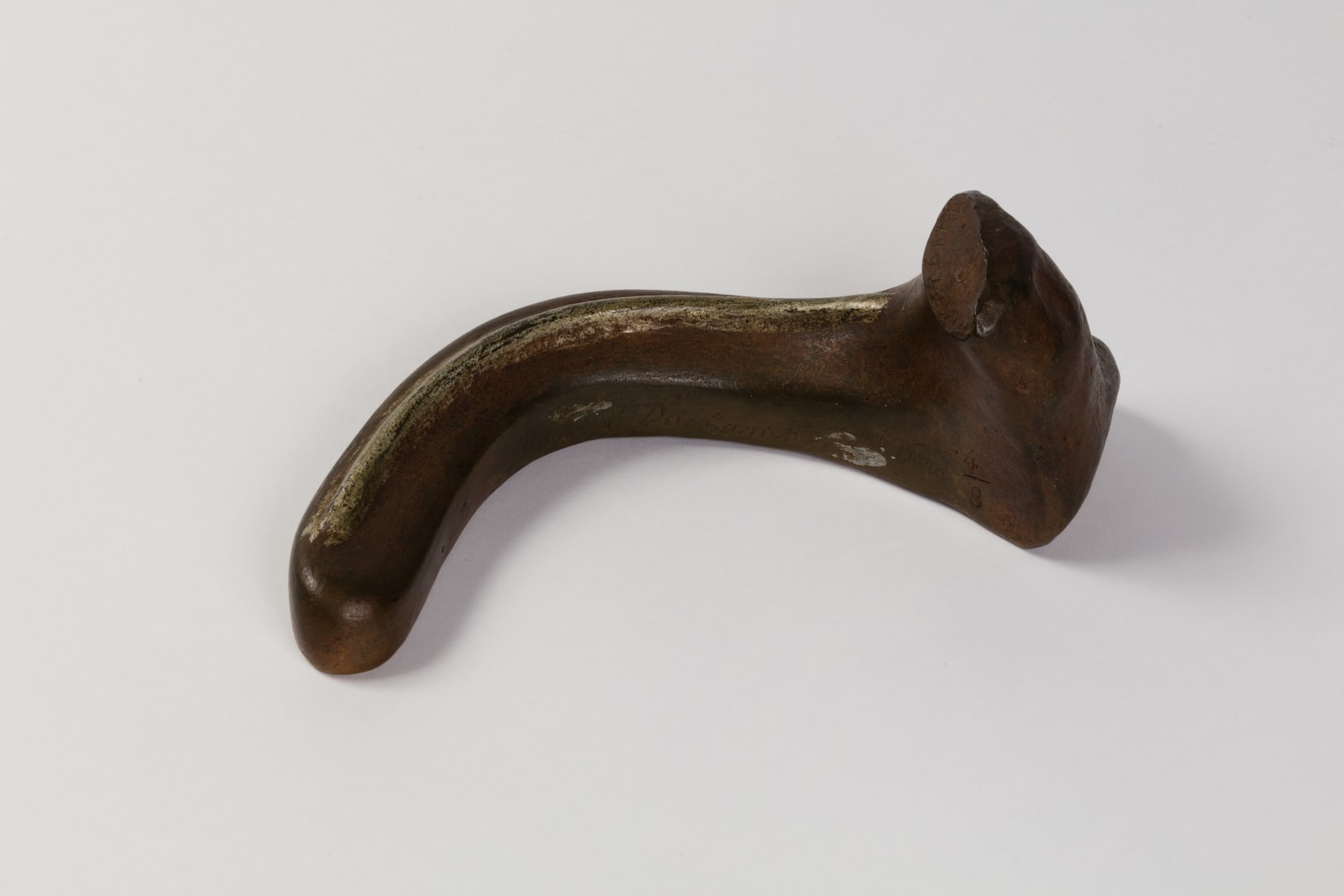Fetishism served Marcel Duchamp (1887–1968) as a potent guiding principle as he traced his singular path in twentieth-century art. This sensual, erotic dimension is indivisible from his radical questioning of the very nature of the artwork and the role of the artist, which prompted painter Willem de Kooning to call him a ‘one-man movement’ in 1951.
The exhibition Please Touch: Marcel Duchamp and the Fetish, curated by Paul B. Franklin at Thaddaeus Ropac, London, is the first to explore the centrality of fetishism and the fetish in the artist’s practice.
Everything can be based on an erotic climate without too much trouble. I believe in eroticism a lot, because it’s truly a rather widespread thing throughout the world, a thing that everyone understands. It replaces, if you wish, what other literary schools called Symbolism, Romanticism […] It’s the basis of everything, and no one talks about it. Eroticism was a theme, even an ‘ism’, which was the basis of everything I was doing.
— Marcel Duchamp, 1967
The exhibition’s title is borrowed from one of Duchamp’s most fetishistic works, Prière de toucher (Please Touch) (1947), a foam-rubber breast enveloped in black velvet that the artist created for the cover of the exhibition catalogue Le Surréalisme en 1947. This title mischievously invites visitors to contravene conventional museum etiquette and to participate in an intimate dialogue with the works on view.
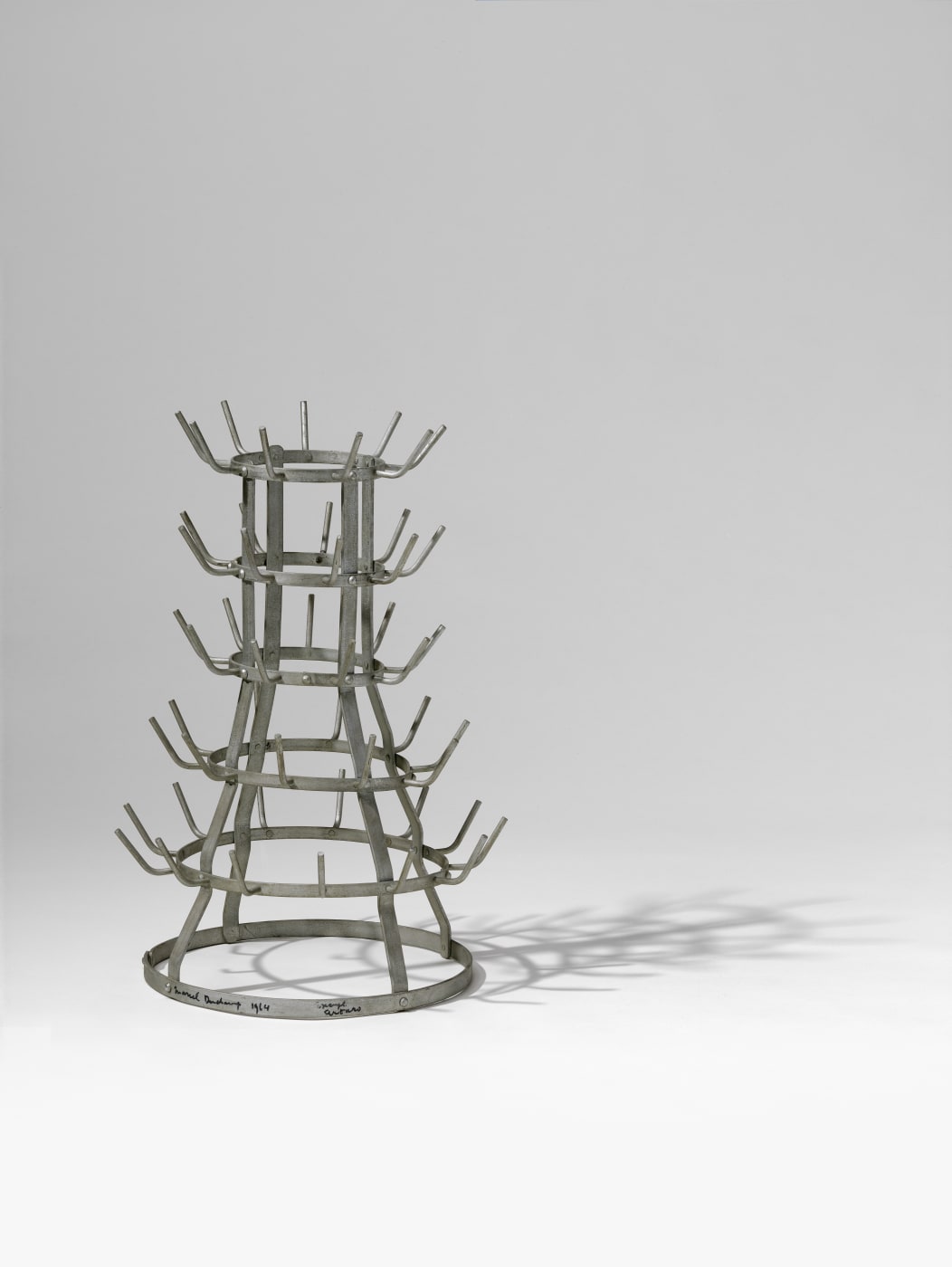
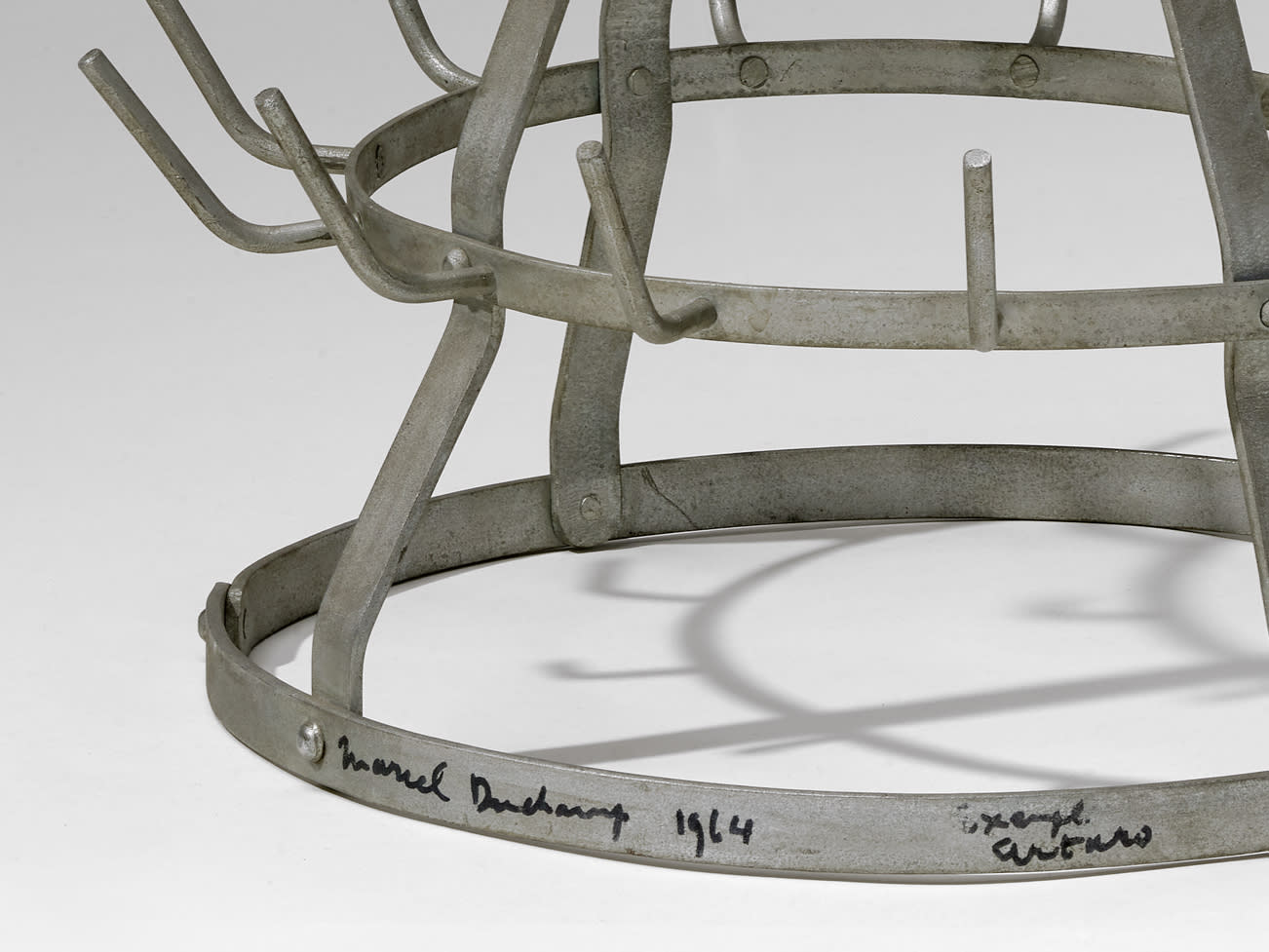
Readymade as Fetish Object
Beginning in the 1910s, Duchamp began appropriating mundane, factory-made objects that he elevated to the position of artworks simply by selecting and displaying them as such. These ‘readymades’ represented an attempt to eliminate from the creative process both the artist’s hand and the predominance of aesthetics.
Marcel Duchamp
Porte-bouteilles (Bottle Rack), 1964 replica of lost 1914 original
Galvanized iron
Diameter at base: 64.2 × 37.5 cm (25 1⁄4 × 14 3⁄4 in)
One of two artist’s proofs (“Exempl. Arturo”) outside the commercial edition of 8 replicas
Private collection
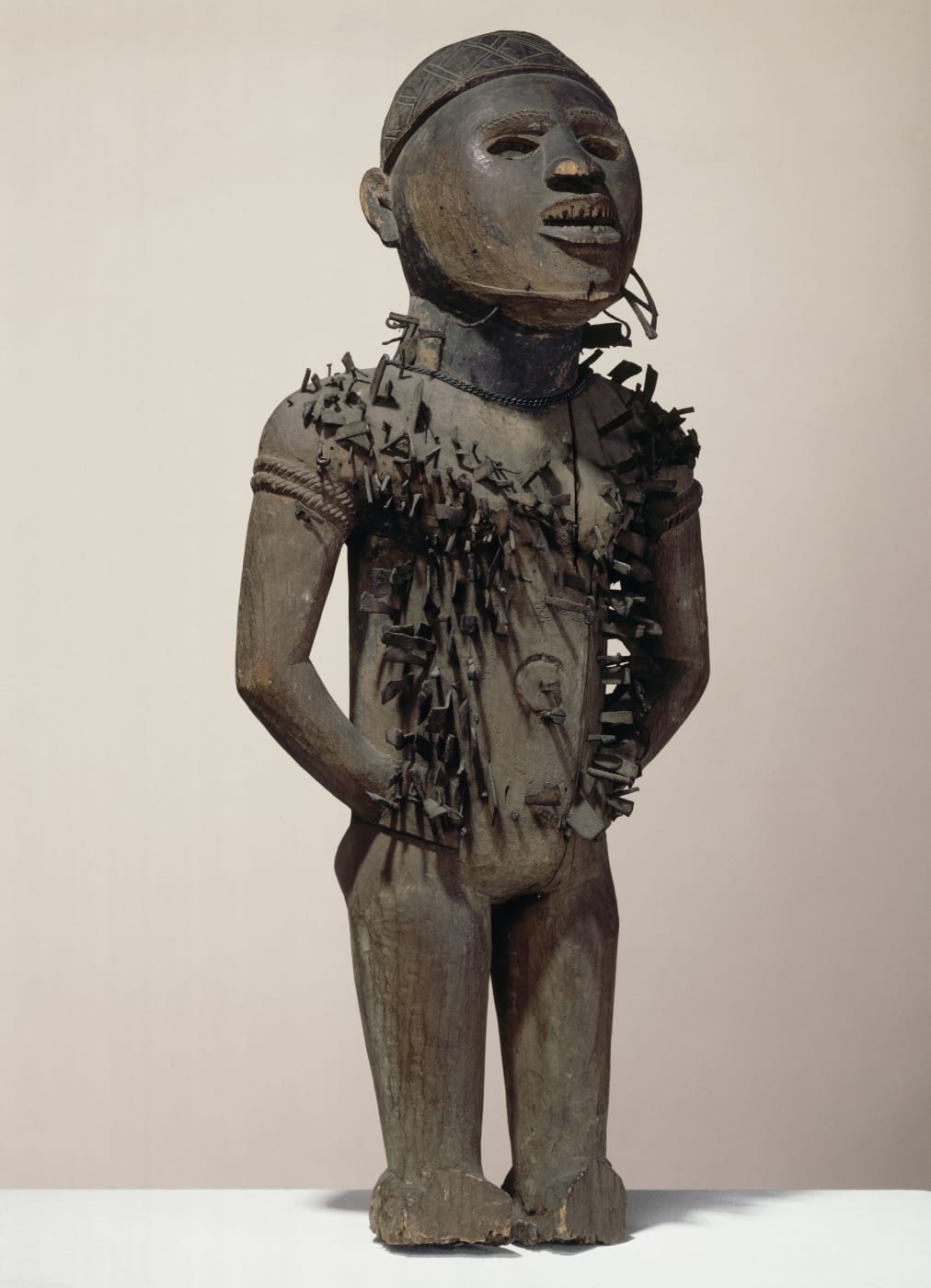
Duchamp’s first pure, unmodified readymade was a galvanised-iron bottle rack that he purchased from a Paris department store in 1914. Porte-bouteilles has the tenor of a fetish object: its spiked form and quasi-mystical dynamic recall African ‘nail fetishes’, while its undeniably sexual connotations embody the eroticism central to Duchamp’s practice.
A Ready-made is a work of art without an artist to make it.
— Marcel Duchamp
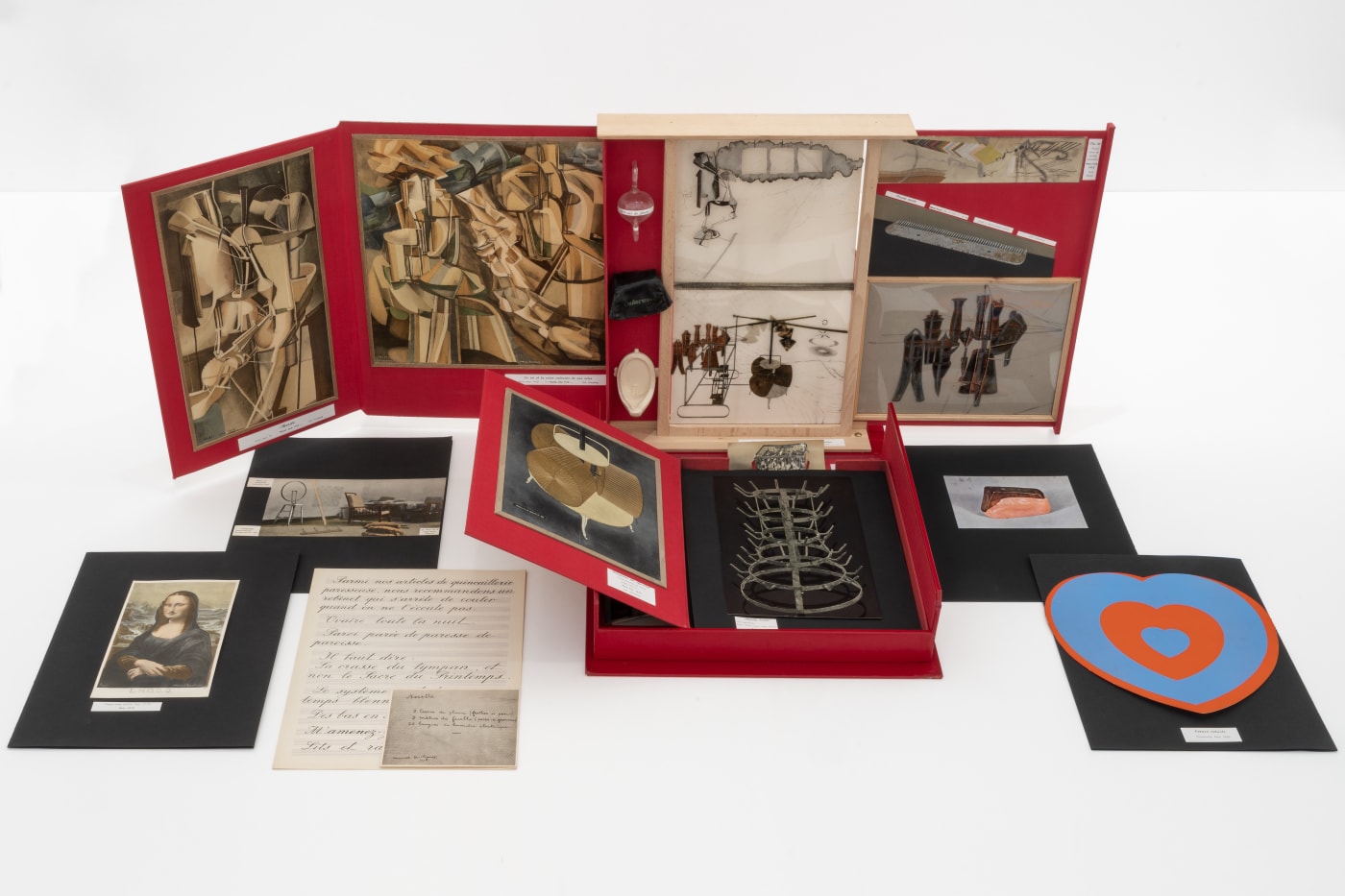
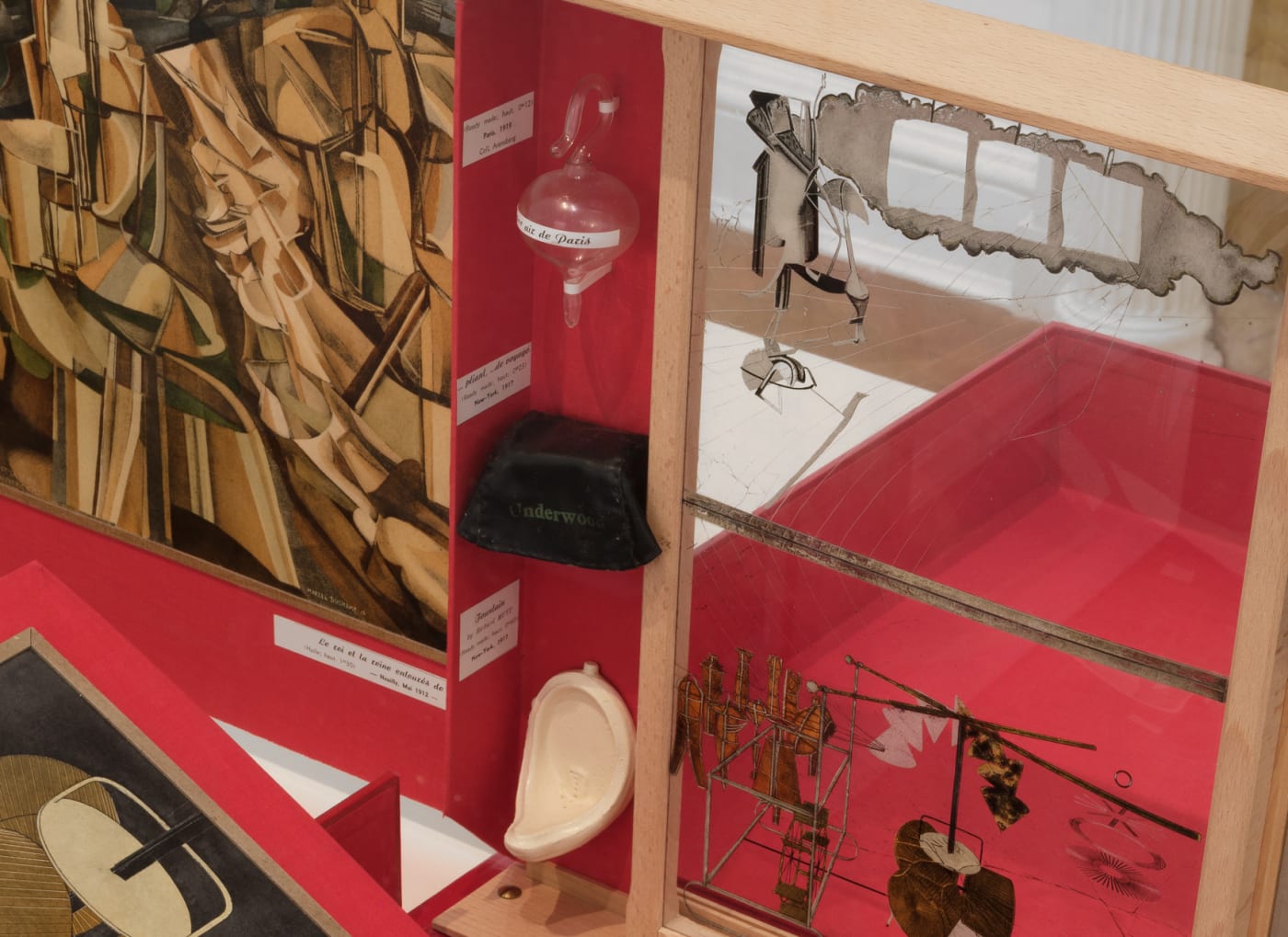
Reproduction as Fetish, Fetishizing Reproduction
For Duchamp, the ideas embodied in a work of art were of greater importance than the physical work itself, much as the personal significance of a fetish object is disproportionate to its use value. He devised a self-curated retrospective titled De ou par Marcel Duchamp ou Rrose Sélavy (Boîte-en-Valise), which he conceived between 1935 and 1941 and later issued in various editions.
Marcel Duchamp
De ou par Marcel Duchamp ou Rrose Sélavy (Boîte-en-valise) (From or by Marcel Duchamp or Rrose Sélavy [Box in a Valise]), conceived 1935–41, series F, assembled 1966
Red-leather-covered cardboard container lined in red linen featuring 80 miniature replicas and reproductions in various media and on various supports
Closed: 41.2 × 38.3 × 9.6 cm (16 1⁄4 × 15 1/8 × 3 3⁄4 in)
Unnumbered edition of 75
Collection Thaddaeus Ropac, Paris
After fetishistically producing miniature replicas and reproductions of his works, he assembled them in transportable cardboard containers. Rather than using contemporary reproduction methods, Duchamp painstakingly created antiquated collotype prints that were coloured by hand and sometimes varnished or framed in faux wood-grain cardboard.
Marcel Duchamp
La Mariée mise à nu par ses célibataires, même (The Bride Stripped Bare by Her Bachelors, Even), commonly known as the Boîte verte (Green Box), 1934
Green-flock-covered cardboard container featuring 94 facsimiles of notes and reproductions of artworks and photographs related to the Grand Verre (Large Glass) (Paris: Édition Rrose Sélavy)
Closed: 33.1 × 28 × 2.5 cm (13 × 11 × 1 in)
Edition 220 of 300
Collection Thaddaeus Ropac, Paris
Fetish Materials
Among his contemporaries, Duchamp was one of the most adventurous when it came to incorporating unorthodox materials into his works, many of which have fetishistic associations. This is apparent in the varying tactile qualities of these fetish materials, which are often sexually suggestive in themselves, enticing the viewer to ‘please touch’.
Marcel Duchamp
. . . pliant, . . . de voyage (Traveler’s Folding Item), 1964 replica of lost 1916 original
Black vinyl with gold paint
Top: 23.5 × 41 × 23 cm (9 1⁄4 × 16 1/8 × 9 in)
Bottom: 23.5 × 53 × 23 cm (9 1⁄4 × 20 7/8 × 9 in)
Edition 1 of 8
Staatliche Schlösser, Gärten und Kunstsammlungen Mecklenburg-Vorpommern, Schwerin
A salvo against hegemonic masculinity, the Frenchman’s work […] brims with gender play, often inflected through verbal and visual puns.
— Paul B. Franklin
Gendering the Fetish
Duchamp isolated fragments of the body to create fetish objects laden with erotic significance, such as the trio of objects that he made in the 1950s and issued in bronze editions the following decade.
Originating as plaster castoffs from the nude female mannequin he was creating for his final masterwork, Étant donnés (1946–66), each of these objects is playfully suggestive: Dart-Object is blatantly (if limply) phallic, Female Fig Leaf fails to conceal the erogenous zones and Wedge of Chastity enacts a sexual duality through its interlocking bronze and dental-plastic pieces.
A non-binary conception of gender is evident in Duchamp’s L.H.O.O.Q. (1919 and 1964 reedition), for which the artist appended a moustache and goatee to an altered reproduction of Leonardo da Vinci’s Mona Lisa, simultaneously laying claim to the masterpiece and masculinising its subject.
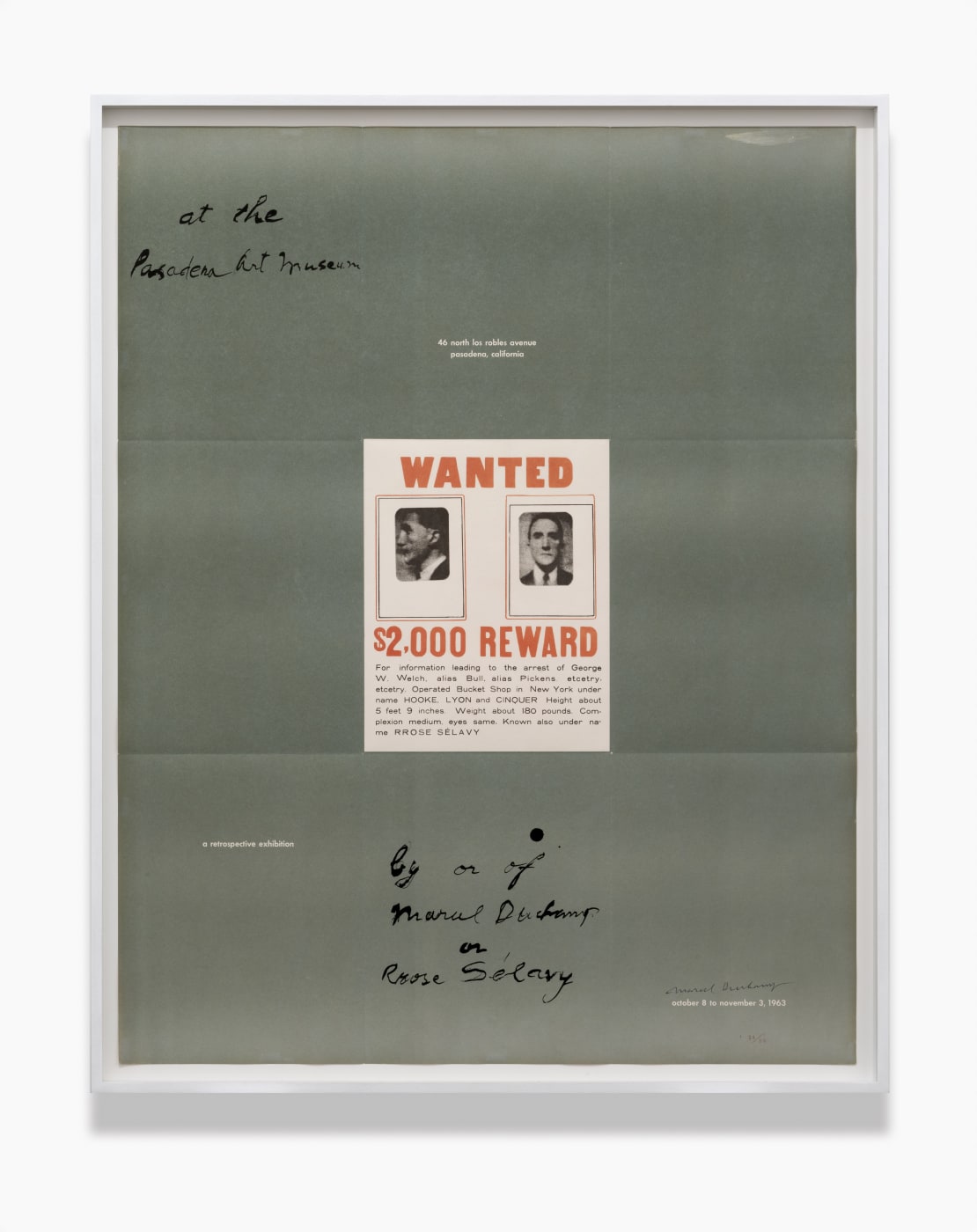
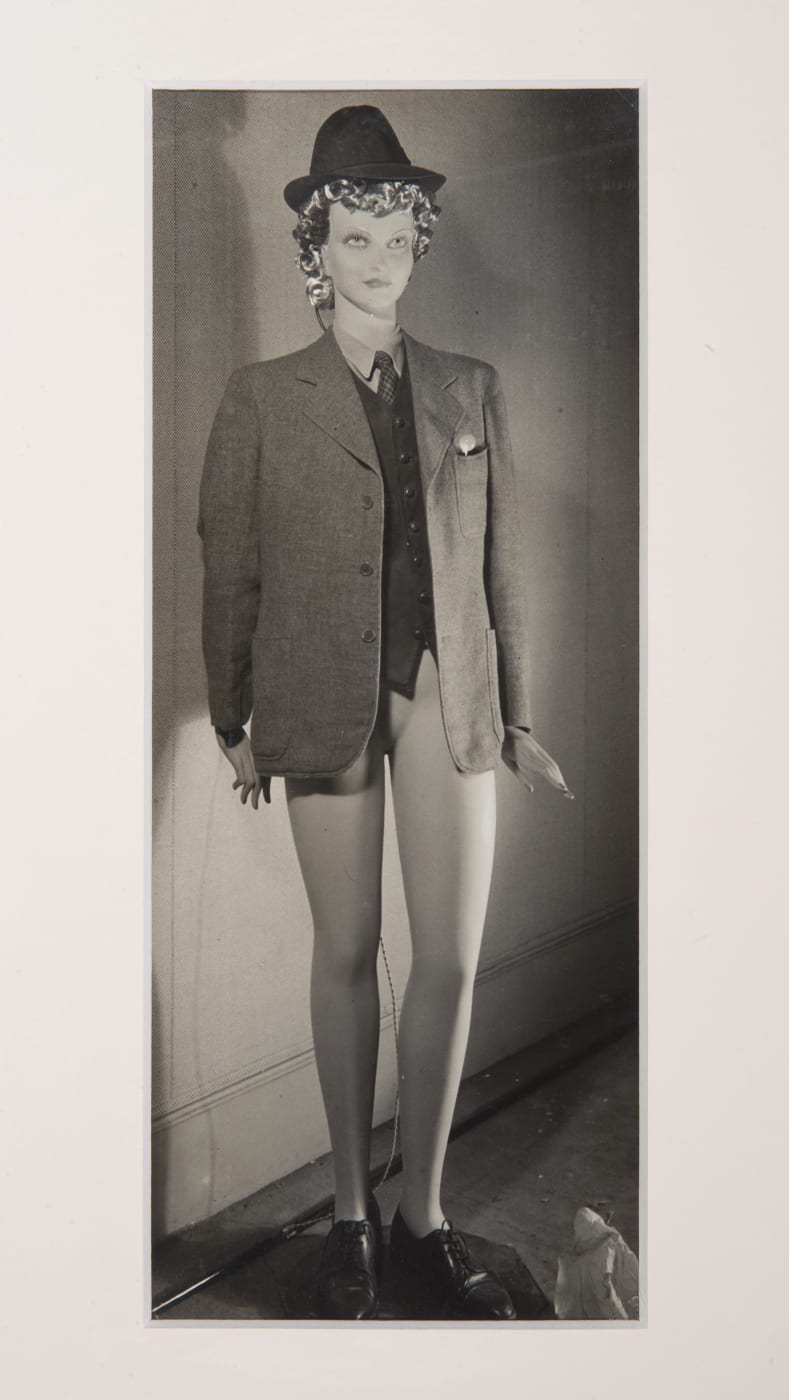
Fetishizing the Self
A playful approach to gender motivated Duchamp’s adoption of the drag persona Rose (later Rrose) Sélavy, whose name is a phonetic pun on the French phrase éros, c’est la vie (eros, that’s life) and reaffirms the artist’s belief in the primacy of eroticism.
She first physically revealed herself in two series of photographic portraits taken by Man Ray in late 1920 or early 1921 and later forged a career of her own, co-creating artworks with Duchamp as well as independently.
Marcel Duchamp
A Poster within a Poster, 1963
Offset-lithographic exhibition poster printed by Cunningham Press, Alhambra, California
87.6 × 68.6 cm (34 1⁄2 × 27 in)
Edition 14 of 20
Collection Thaddaeus Ropac, Paris
Raoul Ubac (born Rudolf Ubach)
Marcel Duchamp’s mannequin Rrose Sélavy, 1938
Gelatin silver print
23.4 × 10.2 cm (9 1⁄4 × 4 in)
Attilio Codognato Collection, Venice
Through his varied personas and self-portraits in different guises, the artist fetishized the self as a new and radical domain of artistic expression, while decrying the limitations of a singular, consistent sense of personhood.
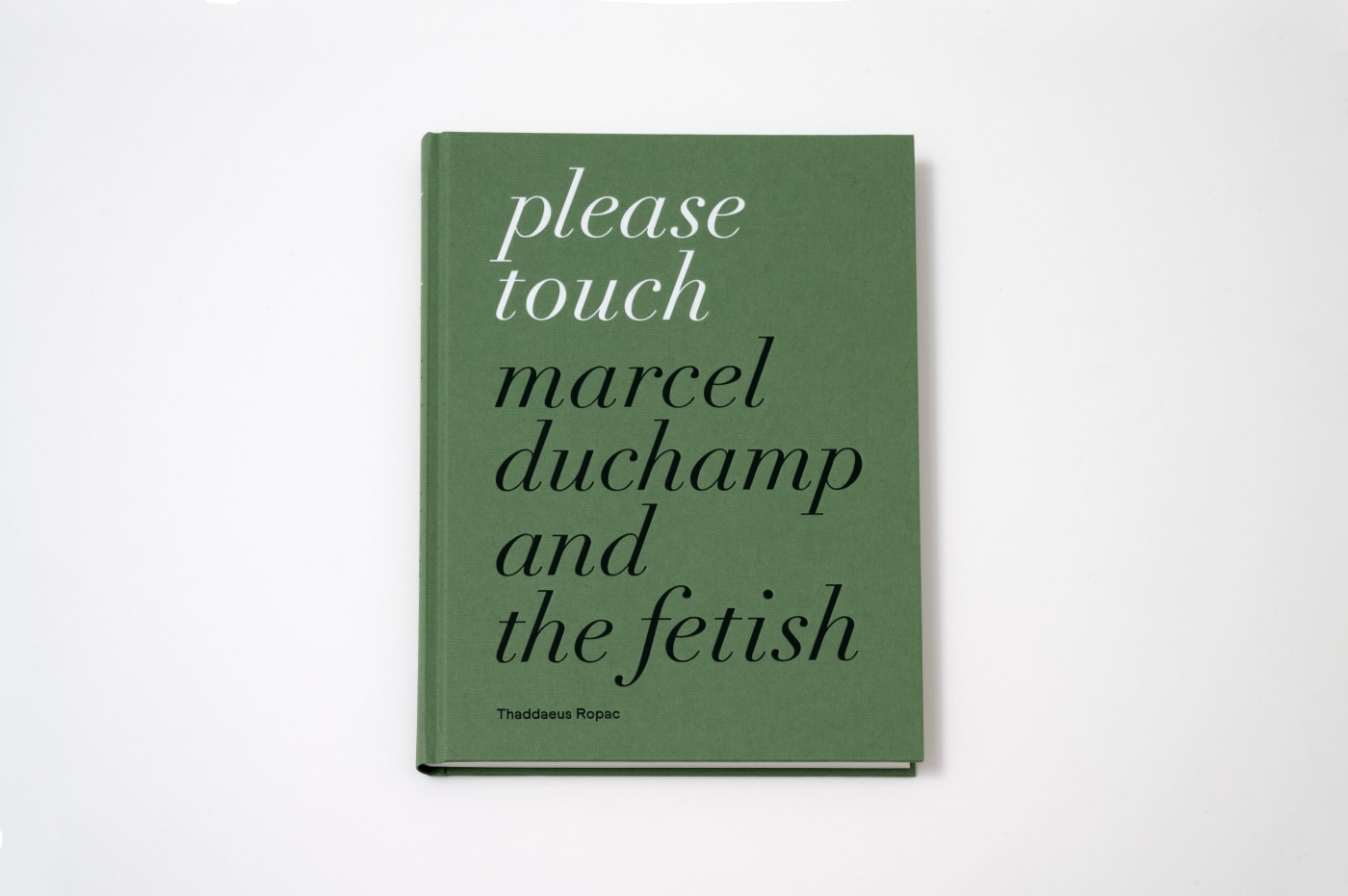
The exhibition is accompanied by a fully illustrated catalogue with an extensive thematic essay by curator Paul B. Franklin.

Marcel Duchamp was born in Normandy in 1887 into a family of artists. He received academic training at the Académie Julian in 1904–05, and his early paintings reveal the influence of Cubism, as in his Nude Descending a Staircase (no. 2; 1912), which caused a sensation when shown at the New York Armory Show in 1913. By the late 1910s he had renounced painting in favour of a more singular and radical approach to art-making.


